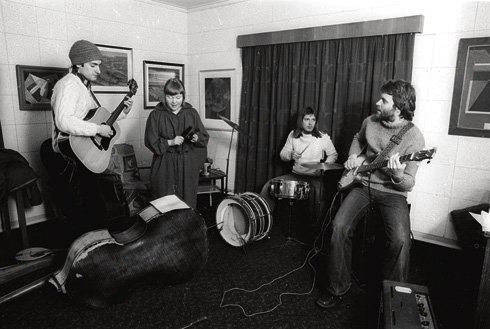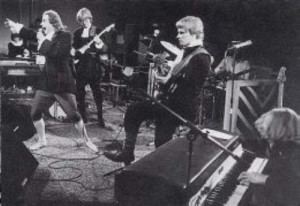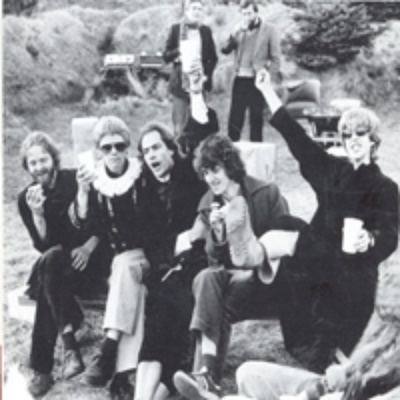Labels Steinar, Spor Past members Karl Sighvatsson Origin Reykjavik, Iceland (1978) | Website [1] Active until 1982 Members Egill Olafsson | |
 | ||
Years active 1978–198419912008–present Albums Þursabit, Gæti eins verið..., Á hljómleikum Similar Spilverk þjóðanna, Fræbbblarnir, Trúbrot, Þeyr, Stuðmenn | ||
ursaflokkurinn sigtryggur vann
Þursaflokkurinn (English: the hobgoblins), often written in a simplified way ("Thursaflokkurinn"), is an Icelandic progressive rock group that was mainly active in the late 1970s and early 1980s. Similar to the Dutch band Focus, Þursaflokkurinn combined rock music with influences of classical music and jazz, enhancing their sound by adding elements of Scandinavian folk music and sometimes eccentric vocals resembling the Rock in Opposition work of, for instance, the Swedish band Samla Mammas Manna.
Contents

Since their foundation in Reykjavík in 1978, the group consisted of Egill Ólafsson (vocals, keyboards) and acoustic guitar, guitarist Þórður Arnason, bassoonist Rúnar Vilbergsson, bassist Tómas Magnus Tómasson and drummer Ásgeir Óskarsson.

Between 1978 and 1980, the band mainly played progressive rock with influences of folk, psychedelic and jazz rock. Most of the songs are based on Icelandic folk songs; especially the debut album includes many traditional folk tunes which all have been turned into a progressive rock arrangement.

The second album Þursabit has more psychedelic influences than the 'folkier' debut album and also features more prominent keyboards, for example the Hammond organ (played by the newly recruited keyboarder Karl Sighvatsson) and the electric piano.

The band's 1980 tour is documented by the live album Á hljómleikum and imports jazz influences into the band's music. A punk rock track at the end of the album became a popular and well-known song in Iceland.

The fourth album of the band, Gæti eins verið... from 1982, showed a completely new style, the new wave music. The acoustic instruments were nearly completely substituted by synthesizers; keyboarder Karl Sighvattson and bassoonist Rúnar Vilbergsson had left the band.
After some records for a new album in 1983 and 1984 the band split. One reason was that the band's success did not progress to countries other than Iceland. Egill Ólafsson started working as a writer and was a member in the band Stuðmenn in which other Þursaflokkurinn musicians were also playing.
Sometimes the band met again for one-off-performances, for example for the memorial for Karl Sighvattson, who died in 1991.
For their 30th anniversary in February 2008, all the albums were reissued in a mini-vinyl-box with a CD full of previously unissued tracks and live versions. In addition there is a tour going through Iceland since early 2008 with the small orchestra Capút; a live CD-DVD was issued in late November 2008 with the title Hinn íslenski Þursaflokkur og Caput.
ursaflokkurinn fing og vi tal
Discography
Songs
BrúðkaupsvísurÞursabit · 1979
NútíminnHinn íslenzki Þursaflokkur · 1978
Jón var kræfur karl og hrausturÁ hljómleikum · 2008
